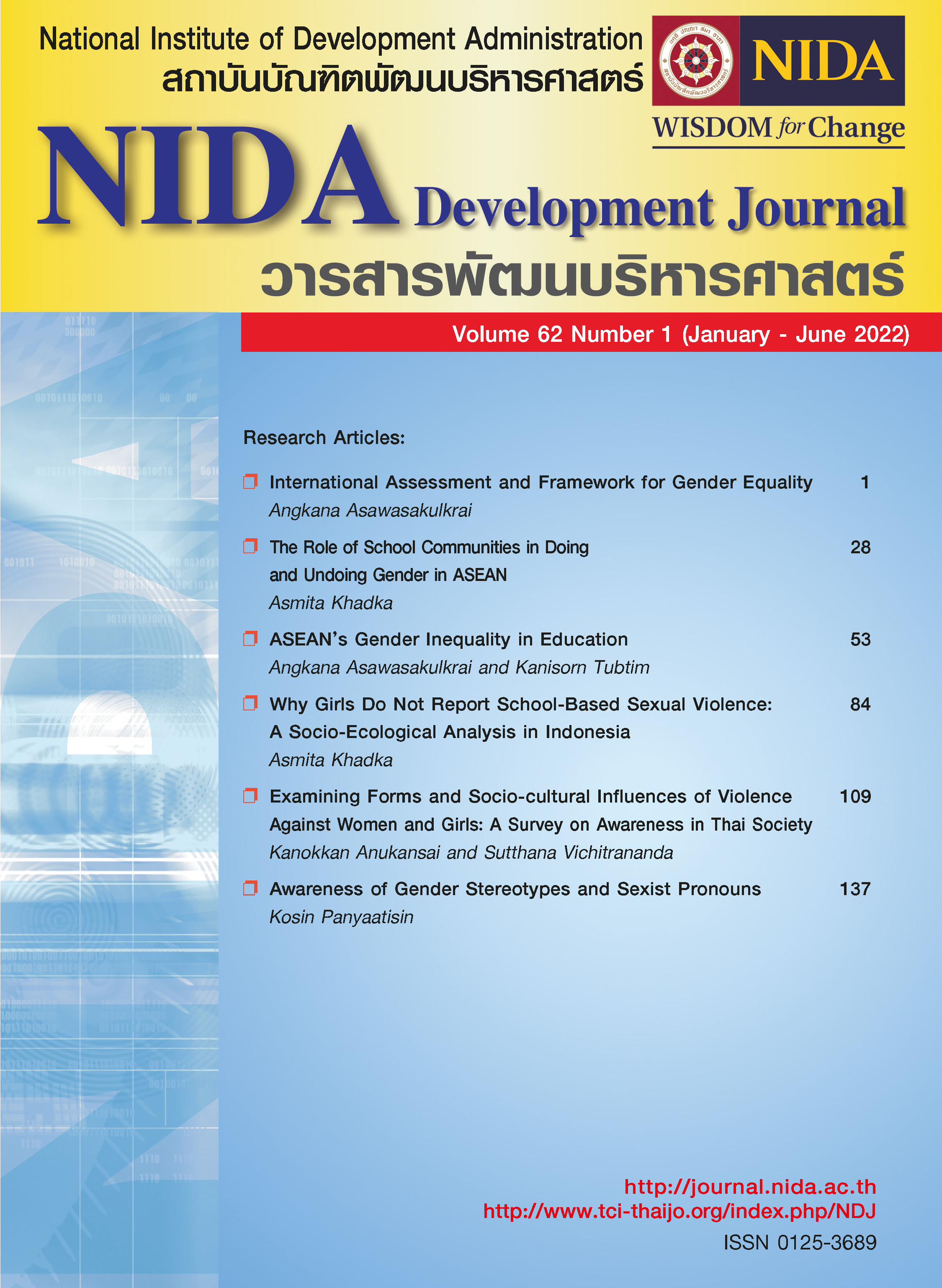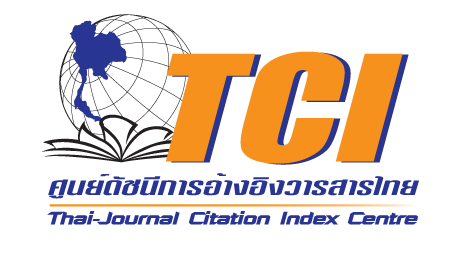The Role of School Communities in Doing and Undoing Gender in ASEAN
Keywords:
Doing Gender, Undoing gender, School, Gender Bias, Gender StereotypesAbstract
Schools present an ideal setting to dismantle gender inequality in society by changing structures, norms, and practices that perpetuate gender inequality in schools. The ‘doing gender’ framework stipulates that gender is socially constructed, while the ‘undoing gender’ framework stipulates that gender can be deconstructed. This paper explores the role of schools as a site to ‘do’ and ‘undo’ gender in ASEAN (Association of Southeast Asian Nations) Member States. It examines the deliberate efforts of school communities (teachers, students, and school administrators) in constructing or de-constructing gender in four areas- classroom practices, textbooks and other instructional materials, student leadership, and sports. Based on the analysis of qualitative data collected through multiple methods, including Focus Group Discussions (FDGs), surveys, expert interviews, and school visits in the ASEAN Member States, the study identifies the processes through which school communities engage in perpetuating as well as resisting and challenging gender bias in school and classroom practices. The findings suggest that forces at individual, school, and policy levels interact dynamically to preserve as well as dismantle gender. Thus, interventions at different levels are imperative to break the cycle of reproduction of traditional gender norms and practices and attain gender equality in schools.
References
Aina, O. E., & Cameron, P. A. (2011). Why does gender matter? Counteracting stereotypes with young children. Dimensions of Early Childhood, 39(3), 11-20.
Amin, A., Kågesten, A., Adebayo, E., & Chandra-Mouli, V. (2018). Addressing gender socialization and masculinity norms among adolescent boys: policy and programmatic implications. Journal of Adolescent Health, 62(3), S3-S5.
ASEAN and UN Women. (2021). ASEAN Gender Outlook. Retrieved November 10, 2022, from https://data.unwomen.org/sites/default/files/documents/Publications/ASEAN/ASEAN%20Gender%20Outlook_final.pdf
Azisah, S. (2012). Gender mainstreaming in education: case studies of Islamic primary schools in South Sulawesi. Indonesia 2000-2006 (Doctoral dissertation, Victoria University).
Bajaj, M. (2009). Un/doing gender? A case study of school policy and practice in Zambia. International Review of Education, 55(5), 483-502.
Bigler, R. S. (1995). The role of classification skill in moderating environmental influences on children's gender stereotyping: A study of the functional use of gender in the classroom. Child Development, 66(4), 1072-1087.
Butler, J. (2004). Undoing gender. Routledge.
Deutsch, F. M. (2007). Undoing gender. Gender & society, 21(1), 106-127.
Eble, A., & Hu, F. (2022). Gendered beliefs about mathematics ability transmit across generations through children’s peers. Nature Human Behaviour, 1-12.
Erden, F. T. (2009). A course on gender equity in education: Does it affect gender role attitudes of preservice teachers?. Teaching and teacher education, 25(3), 409-414.
Glick, P., Lameiras, M., Fiske, S. T., Eckes, T., Masser, B., Volpato, C., Manganelli, A. M., Pek, J. C. X., Huang, L.-l., Sakalli-Uğurlu, N., Castro, Y. R., D'Avila Pereira, M. L., Willemsen, T. M., Brunner, A., Six-Materna, I., & Wells, R. (2004). Bad but Bold: Ambivalent Attitudes Toward Men Predict Gender Inequality in 16 Nations. Journal of Personality and Social Psychology, 86(5), 713–728
Hills, L. A., & Croston, A. (2012). ‘It should be better all together’: Exploring strategies for ‘undoing’gender in coeducational physical education. Sport, education and society, 17(5), 591-605.
Jasmani, M. F. I. M., Yasin, M. S. M., Hamid, B. A., Keong, Y. C., Othman, Z., & Jaludin, A. (2011). Verbs and gender: The hidden agenda of a multicultural society. 3L: Language, Linguistics, Literature®, 17.
Kelan, E. K. (2010). Gender logic and (un) doing gender at work. Gender, Work & Organization, 17(2), 174-194.
Koul, R., Lerdpornkulrat, T., & Chantara, S. (2011). Relationship between career aspirations and measures of motivation toward biology and physics, and the influence of gender. Journal of Science Education and Technology, 20(6), 761-770.
Lee, J. F., & Collins, P. (2008). Gender voices in Hong Kong English textbooks—Some past and current practices. Sex Roles, 59(1-2), 127-137.
Marpinjun S and Ramsey PG. (2017). Feminism and early childhood education in Indonesia: Teachers’ reflections. In Smith K, Alexander K and Campell, S (eds) Feminism(s) in Early Childhood: Using Feminist Theories in Research and Practice. Singapore: Spring, pp. 149–163.
Messerschmidt, J. W. (2009). “Doing gender” The impact and future of a salient sociological concept. Gender & Society, 23(1), 85-88.
Michell, D., Szabo, C., Falkner, K., & Szorenyi, A. (2018). Towards a socio-ecological framework to address gender inequity in computer science. Computers & Education, 126, 324-333
Murphy-Graham, E. (2009). Constructing a new vision: Undoing gender through secondary education in Honduras. International Review of Education, 55(5), 503-521.
Pattalung, P. N. (2008). An analysis of sexist language in ESL textbooks by Thai authors used in Thailand. University of North Texas.
Risman, B. J., & Davis, G. (2013). From sex roles to gender structure. Current Sociology, 61(5-6), 733-755.
Stromquist, N. (2007). The Gender Socialization Process in Schools: a cross-national comparison. Background paper prepared for Education for All Global Monitoring Report 2008 – Education for All by 2015: will we make it? New York: UNESCO
Stromquist, N. P., & Fischman, G. E. (2009). Introduction–from denouncing gender inequities to undoing gender in education: practices and programmes toward change in the social relations of gender. International Review of Education, 55(5), 463-482.
Subrahmanian, R. (2005). Gender equality in education: Definitions and measurements. International Journal of Educational Development, 25(4), 395-407.
The ASEAN Secretariat. (2019). ASEAN key figures- 2019. Retrieved November 10, 2022, from https://www.aseanstats.org/wp-content/uploads/2019/11/ASEAN_Key_Figures_2019.pdf
Thein, P. T. (2015, July). Gender equality and cultural norms in Myanmar. Paper presented at the 1st International Conference on Burma/Myanmar Studies, Chiang Mai, Thailand
UNDP. (2018). Human Development Data (1990-2018). Retrieved November 10, 2022, from http://hdr.undp.org/en/data#
UNICEF. (2019). Gender counts: East and Southeast Asia. Retrieved November 10, 2022, from https://www.unicef.org/rosa/media/4226/file/Gender%20Counts_East_SouthEast_Asia.pdf
Vu, P. A. (2008). Gender stereotypes in story textbooks for primary school students in Vietnam [Unpublished master’s thesis, University of Oslo].
WEF. (2022). Global Gender Gap Report 2022. Retrieved November 10, 2022, from https://www.weforum.org/reports/global-gender-gap-report-2022/
West, C., & Zimmerman, D. H. (1987). Doing gender. Gender & Society, 1(2), 125-151.
Woehrle, L. M. and D. Engelmann (2008). Gender Studies. Encyclopedia of Violence, Peace, & Conflict (Second Edition). L. Kurtz. Oxford, Academic Press: 859-868.
Downloads
Published
How to Cite
Issue
Section
License
Copyright (c) 2023 NIDA Development Journal

This work is licensed under a Creative Commons Attribution-NonCommercial-NoDerivatives 4.0 International License.





